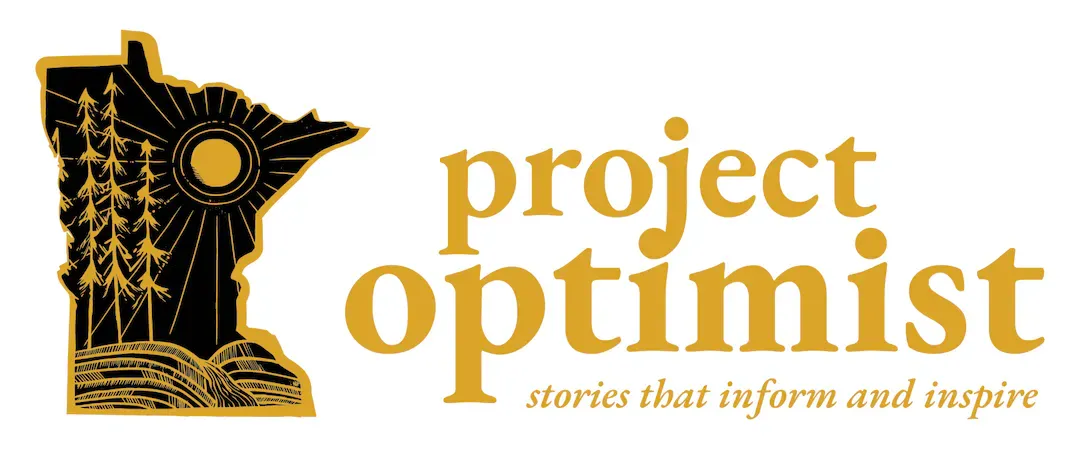‘We have always existed with fire’
Education about the history and role of controlled burns in northeast Minnesota is key, officials say.
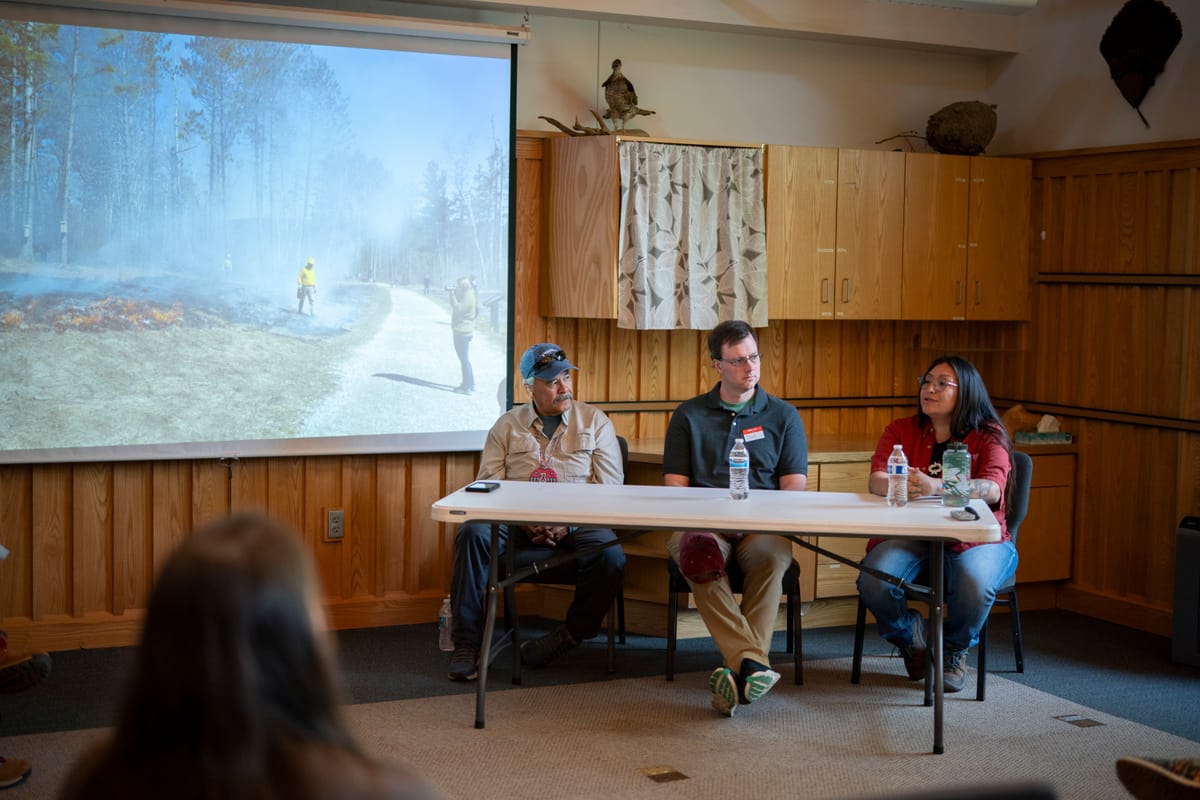
DULUTH, Minn. – Education is the biggest obstacle officials have to hurdle before they can hold prescribed burns more frequently across northeast Minnesota.
That’s according to panelists who spoke during an event about the role of fire in the region on Saturday, May 31, hosted by Hartley Nature Center and Project Optimist.
Humans used fire to “shape our environment,” said Vern Northrup, a Fond du Lac Band elder and retired wildland firefighter.

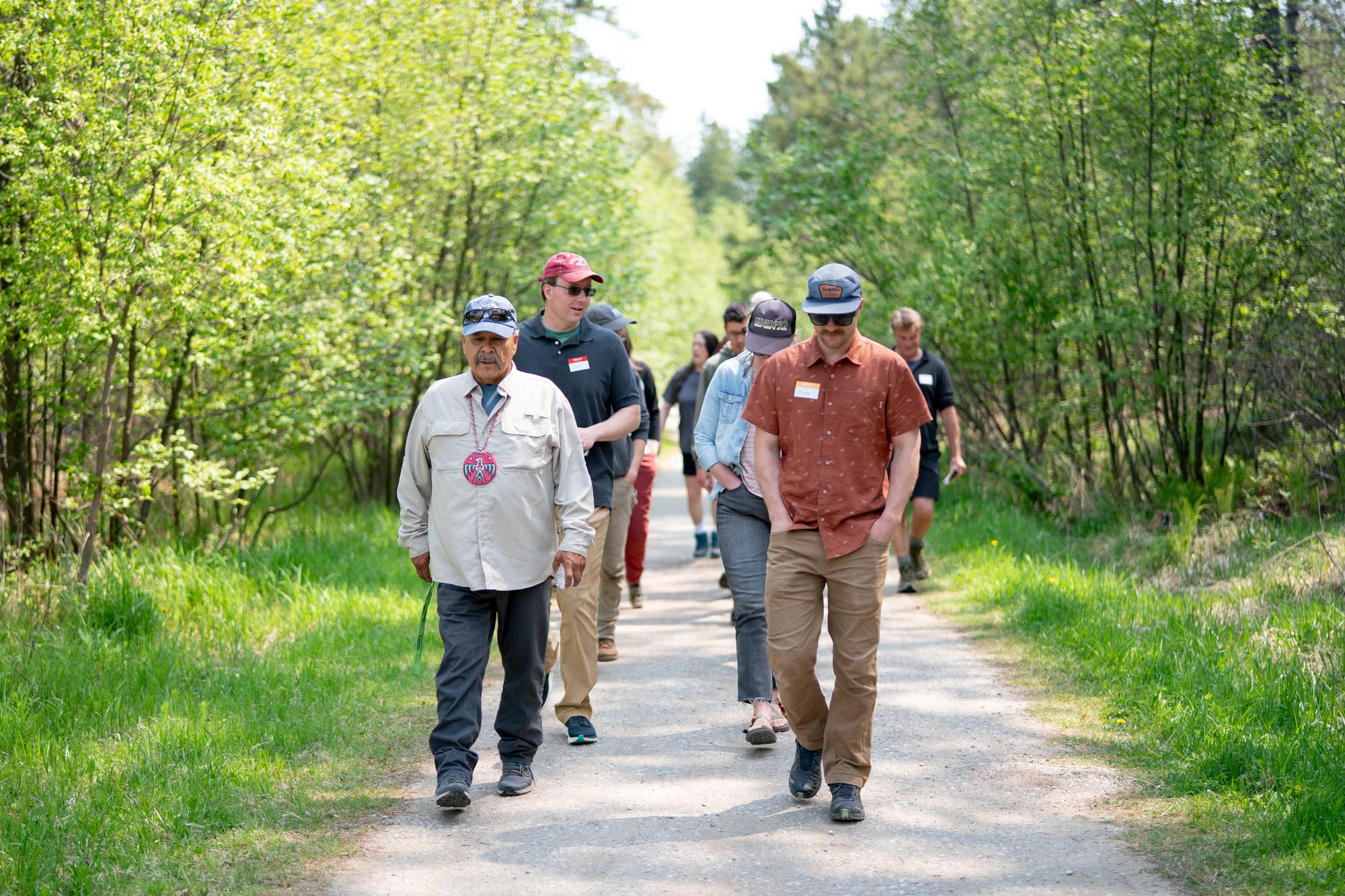



People attend an event about the role of fire in northeast Minnesota on Saturday, May 31, 2025, at Hartley Nature Center in Duluth, Minn. The group walked to a meadow in the park where city staff conducted a prescribed burn in recent years. (Erica Dischino for Project Optimist)
“We have always existed with fire,” Northrup said. “We’ve coexisted with fire. We learned that fire was very important to our environment.”
Before fire suppression became common, Native Americans used frequent, low-intensity controlled burns to manage deadfall and undergrowth in forests. Northrup heard stories of Ojibwe people who could walk in the forest under a canopy of trees, free from brush. They would travel to Duluth via canoe on Lake Superior and see a hillside that looked blue because it was so full of blueberries.
Sign up for Project Optimist's newsletter
Solution-focused news, local art, community conversations
It's free. No spam. Unsubscribe anytime.
Valerie Ross Zhaawendaagozikwe, a University of Wisconsin-Superior student, was part of a research team that studied red pine trees on Minnesota and Wisconsin points.
“By using dendrochronology – counting the rings – we could see the history of the fires and the increments of the fires, which were done by the Ojibwe people, or Anishinaabe, on the points,” she said “And then we could see when it abruptly stopped after the signing of the 1854 Treaty.”
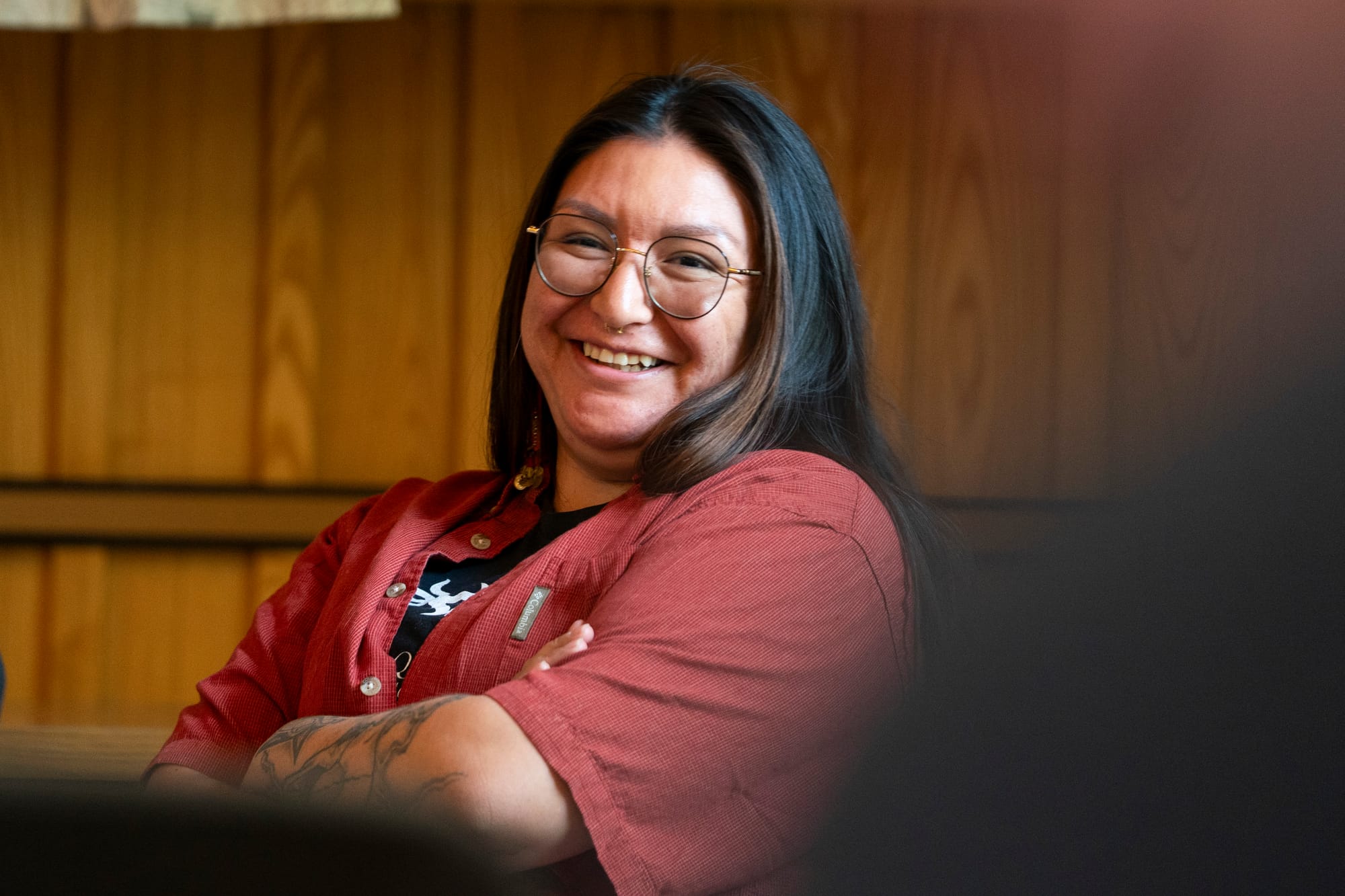
The research Zhaawendaagozikwe worked on is currently being peer reviewed. Clark Christenson, a forester for the City of Duluth, said he thinks the paper will give officials momentum to create a long-term plan for prescribed burns in the city.
Up until now, controlled burns have been minimal in city parks.

“Education is by far the biggest piece, not just making people aware that we want to burn and we should burn, but why we should burn … By introducing fire, we're introducing a very critical process that helps transform it into something that is hopefully more resilient, more diverse,” he said.
Northrup spent his career traveling across the U.S. to fight wildfires, and he said they are becoming more common and more intense.
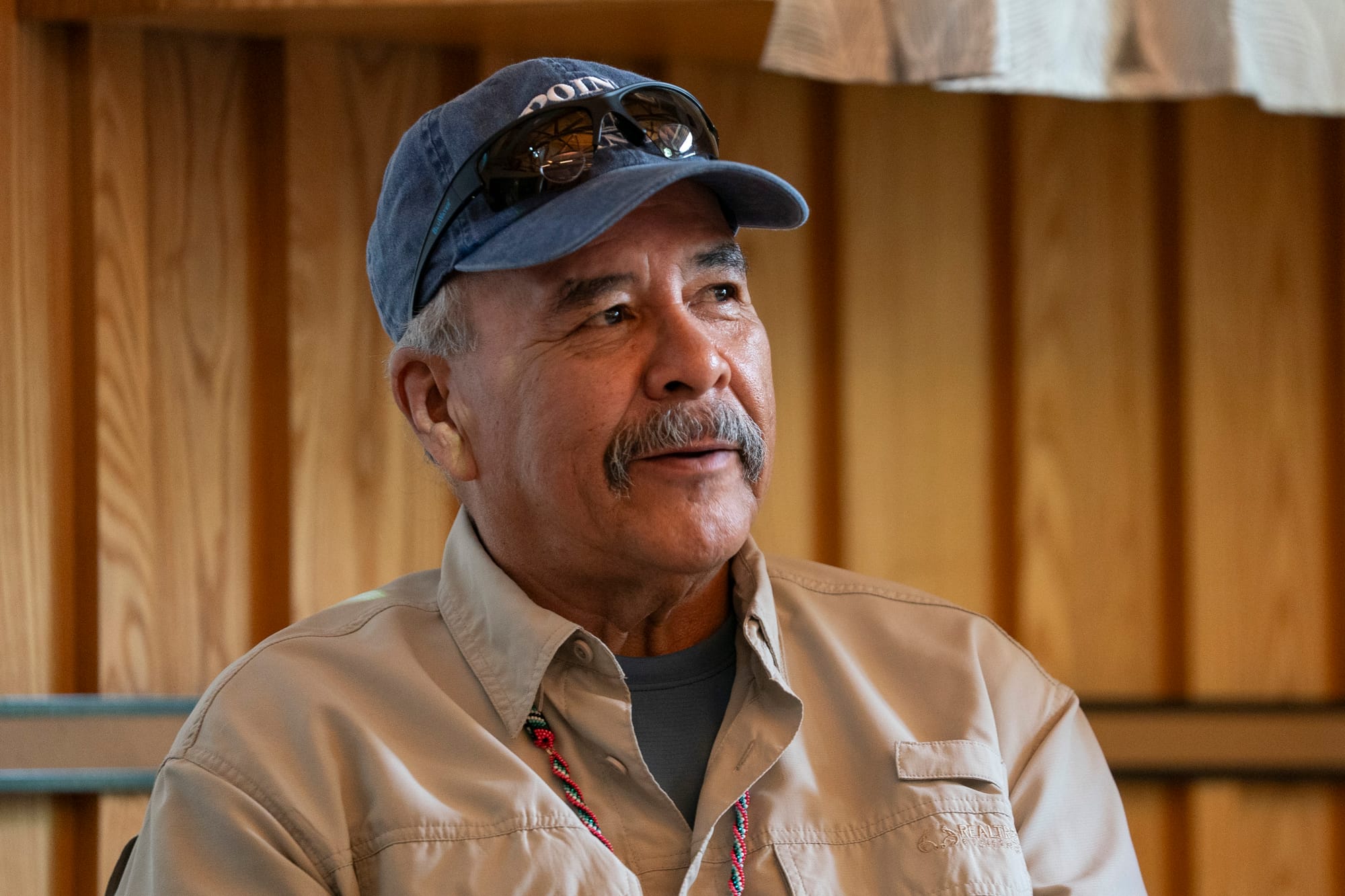
Prescribed burns limit the fuel that drives wildfires, and he said controlled burns will be necessary to keep people safe.
“We gotta keep using prescribed fire to create some holes … around here to protect all these cities and towns. We can't just do it mechanically. We don't have the means,” he said “We're going to have to use fire, and we're going to have to educate people that this is the only way we're going to keep ourselves safe.”
This story was edited by Nora Hertel.
